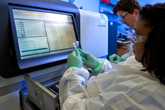AMD in Action: Fighting Infectious Disease on Many Fronts
AMD Methods Map the Genetic Range of a Common Cause of Respiratory Illness
Finding a Dangerous Fungus in Healthcare Settings
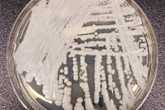 In June 2016, the Centers for Disease Control and Prevention (CDC) alerted healthcare providers and laboratories in the United States to be aware of a new disease threat―Candida auris, a globally emerging, multidrug-resistant fungus. C. auris causes serious and sometimes fatal infections, and it can strike people in the very place they seek care―healthcare facilities, including hospitals, nursing homes, and other clinical settings. However, C. auris can be challenging to identify.
In June 2016, the Centers for Disease Control and Prevention (CDC) alerted healthcare providers and laboratories in the United States to be aware of a new disease threat―Candida auris, a globally emerging, multidrug-resistant fungus. C. auris causes serious and sometimes fatal infections, and it can strike people in the very place they seek care―healthcare facilities, including hospitals, nursing homes, and other clinical settings. However, C. auris can be challenging to identify.
CDC Scientists Use AMD Methods to Develop Diagnostic Tools for Zika Virus
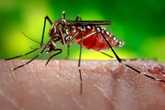 Almost directly on the heels of the chikungunya virus, the Western Hemisphere faces a new mosquito-borne threat – Zika Virus. And this virus appears to bring tragic consequences for some babies – microcephaly, a devastating birth defect in which a baby’s head is smaller than expected.
Almost directly on the heels of the chikungunya virus, the Western Hemisphere faces a new mosquito-borne threat – Zika Virus. And this virus appears to bring tragic consequences for some babies – microcephaly, a devastating birth defect in which a baby’s head is smaller than expected.
Tracing Connections in an HIV-1 Outbreak in Indiana
 In January 2015, public health officials in Indiana began investigating an outbreak of 11 confirmed cases of HIV-1 infection in a rural county in the southeastern part of the state. Scientists are also using AMD technology to identify the overlap of HCV and HIV transmission clusters.
In January 2015, public health officials in Indiana began investigating an outbreak of 11 confirmed cases of HIV-1 infection in a rural county in the southeastern part of the state. Scientists are also using AMD technology to identify the overlap of HCV and HIV transmission clusters.
Exploring meningococcal outbreaks and carriage with whole genome sequencing
 Vaccination is the best defense against meningococcal disease. In late 2014 and early 2015, FDA approved new vaccines to help protect against a fifth type of the bacteria that causes the disease, Neisseria meningitidis serogroup B. Soon after in 2015, two universities on opposite sides of the country experienced outbreaks of serogroup B meningococcal disease. This provided a chance to use AMD to examine the impact these new vaccines have on carriage of N. meningitidis.
Vaccination is the best defense against meningococcal disease. In late 2014 and early 2015, FDA approved new vaccines to help protect against a fifth type of the bacteria that causes the disease, Neisseria meningitidis serogroup B. Soon after in 2015, two universities on opposite sides of the country experienced outbreaks of serogroup B meningococcal disease. This provided a chance to use AMD to examine the impact these new vaccines have on carriage of N. meningitidis.
Whole genome sequencing pinpoints source of listeriosis outbreak
 During the fall of 2014, a multi-state outbreak of listeriosis sent 34 people to the hospital; seven people died. Listeriosis is caused by the germ Listeria. Listeriosis is rare, but it strikes hard at the most vulnerable people – older adults, pregnant women, newborn babies, and people with weakened immune systems. Because listeriosis can be deadly, it is important to identify the source of the germ quickly to keep more people from getting sick. However, Listeria is difficult to identify and can lurk in foods that we don’t suspect.
During the fall of 2014, a multi-state outbreak of listeriosis sent 34 people to the hospital; seven people died. Listeriosis is caused by the germ Listeria. Listeriosis is rare, but it strikes hard at the most vulnerable people – older adults, pregnant women, newborn babies, and people with weakened immune systems. Because listeriosis can be deadly, it is important to identify the source of the germ quickly to keep more people from getting sick. However, Listeria is difficult to identify and can lurk in foods that we don’t suspect.
Tried-and-true and State-of-the-art Combine to Uncover a Hidden Virus
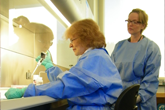 While doing routine virus isolation from a blood sample collected from a patient enrolled in a study of Heartland virus, a recently discovered tick-associated virus, CDC microbiologist Olga Kosoy’s keen eye saw something unexpected: evidence of another virus. Because it seemed completely different, she asked CDC scientist Amy Lambert to sequence the virus genome using the powerful tools of Advanced Molecular Detection (AMD). Both were surprised to find that they had discovered an entirely new human pathogen.
While doing routine virus isolation from a blood sample collected from a patient enrolled in a study of Heartland virus, a recently discovered tick-associated virus, CDC microbiologist Olga Kosoy’s keen eye saw something unexpected: evidence of another virus. Because it seemed completely different, she asked CDC scientist Amy Lambert to sequence the virus genome using the powerful tools of Advanced Molecular Detection (AMD). Both were surprised to find that they had discovered an entirely new human pathogen.
Identifying Enterovirus in Children with Respiratory Illness
 In mid-August 2014, hospitals in Missouri and Illinois notified CDC of an increase in admissions of children with severe respiratory illness. The hospitals sent specimens to CDC’s Polio and Picornavirus Laboratory to sequence the virus and determine the type. CDC identified enterovirus D68 (EV-D68) in most of the specimens.
In mid-August 2014, hospitals in Missouri and Illinois notified CDC of an increase in admissions of children with severe respiratory illness. The hospitals sent specimens to CDC’s Polio and Picornavirus Laboratory to sequence the virus and determine the type. CDC identified enterovirus D68 (EV-D68) in most of the specimens.
CDC laboratories produce first genomic sequence of Liberian Ebola
 With the largest Ebola outbreak in history raging through West Africa, understanding whether the virus is changing as it spreads through different populations can help responders know what treatments to use and also help research laboratories develop new tools to speed diagnosis in the field.
With the largest Ebola outbreak in history raging through West Africa, understanding whether the virus is changing as it spreads through different populations can help responders know what treatments to use and also help research laboratories develop new tools to speed diagnosis in the field.
Zeroing in on “nightmare bacteria” CRE hot spots in a Colorado hospital, 2012
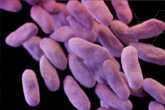 The diagnosis of a drug-resistant “nightmare bacteria” in two Colorado patients spurred hospital and state health officials to join forces with CDC to investigate. These bacteria — Carpabenem-resistant Enterobacteriaceae, or CRE — have become resistant to all or nearly all of the antibiotics we have today. Untreatable and hard-to-treat infections from CRE germs are on the rise among patients in medical facilities.
The diagnosis of a drug-resistant “nightmare bacteria” in two Colorado patients spurred hospital and state health officials to join forces with CDC to investigate. These bacteria — Carpabenem-resistant Enterobacteriaceae, or CRE — have become resistant to all or nearly all of the antibiotics we have today. Untreatable and hard-to-treat infections from CRE germs are on the rise among patients in medical facilities.
Multistate outbreak of hepatitis A infection linked to pomegranate seeds from Turkey
 Scientists traced a hepatitis A outbreak affecting 165 people to a frozen berry blend product. Whole genome sequencing and advanced analytic methods helped them identify a shipment of pomegranate seeds from Turkey as the source of the outbreak.
Scientists traced a hepatitis A outbreak affecting 165 people to a frozen berry blend product. Whole genome sequencing and advanced analytic methods helped them identify a shipment of pomegranate seeds from Turkey as the source of the outbreak.
Whole Genome Sequencing Pinpoints Single Case and Potential New Listeria Source
 In routine food testing, the Canadian Food Inspection Agency found Listeria in bagged lettuce. Investigators conducted whole genome sequencing and found one of the closest matches between an infected person and a contaminated food product that they had ever seen.
In routine food testing, the Canadian Food Inspection Agency found Listeria in bagged lettuce. Investigators conducted whole genome sequencing and found one of the closest matches between an infected person and a contaminated food product that they had ever seen.
Using AMD methods to track polio
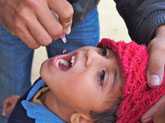 When polio broke out in the Horn of Africa in 2013, Kenya lab technicians quickly identified the source as a wild virus and sent specimens to CDC. Overnight, CDC scientists sequenced the virus and identified it as coming from Nigeria—on the other side of the continent.
When polio broke out in the Horn of Africa in 2013, Kenya lab technicians quickly identified the source as a wild virus and sent specimens to CDC. Overnight, CDC scientists sequenced the virus and identified it as coming from Nigeria—on the other side of the continent.
Decoding Middle East Respiratory Syndrome Coronavirus: AMD provides quick answers
 In early May 2014, CDC received a mucus specimen from a MERS patient. In less than 48 hours, CDC used Advanced Molecular Detection (AMD) methods to sequence the complete virus genome.
In early May 2014, CDC received a mucus specimen from a MERS patient. In less than 48 hours, CDC used Advanced Molecular Detection (AMD) methods to sequence the complete virus genome.
- Page last reviewed: April 25, 2017
- Page last updated: April 25, 2017
- Content source:
- Centers for Disease Control and Prevention
- Page maintained by: Office of Associate Director of Communication, Division of Public Affairs


 ShareCompartir
ShareCompartir
